A well-maintained garden is an oasis of abundance, bursting with nutritious leafy greens, crunchy root vegetables, and sweet, juicy berries. But while you can enjoy your homegrown produce fresh, you’ll get even more use out of your beds if you preserve your harvest with canning.
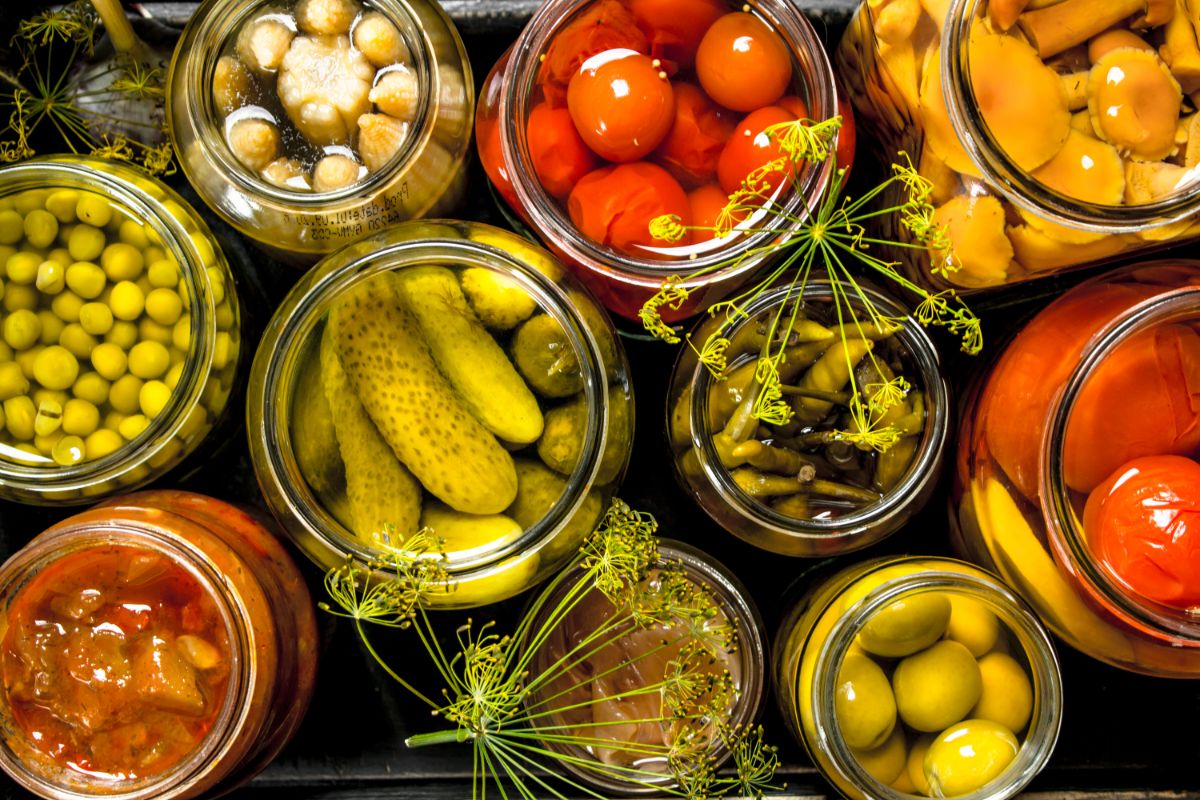
Many different vegetables and fruits can be preserved into cans of zesty pickles and relishes and jars of scrumptious jams and jellies. But some garden crops are easier to preserve than others, which is important to keep in mind if you’re new to canning. Luckily, even beginning canners should have success preserving these easy-to-process crops.
Jump to:
18 best fruit and vegetables to grow for canning and preserving
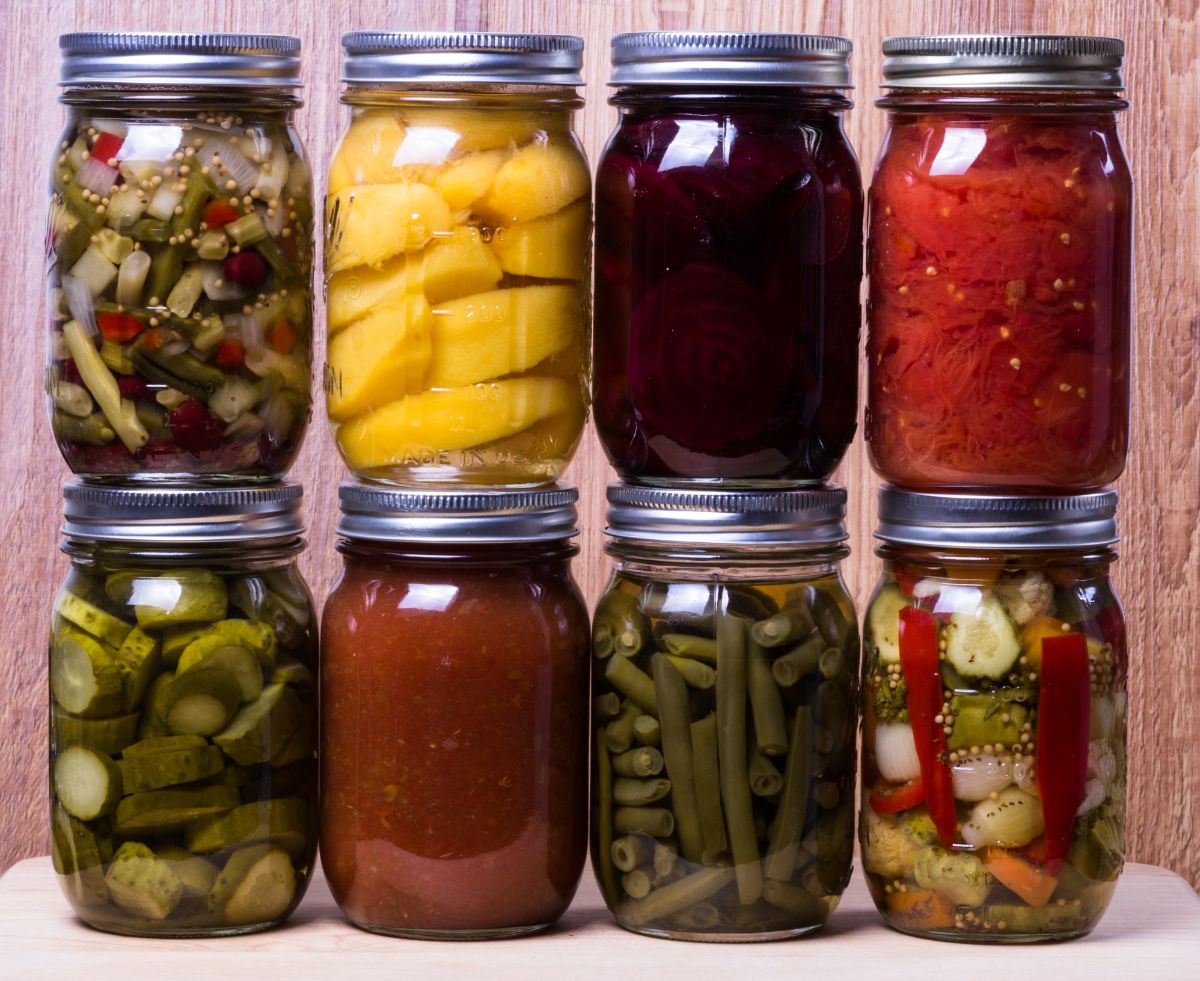
Vegetables and fruit are usually canned in one of two ways: water bath canning and pressure canning. In general, water bath canning tends to be easier to master, while pressure canning takes a bit more practice. That said, vegetables and fruit preserved with water bath canning methods will generally need an acid-like vinegar added to the recipe for food safety.
Investing in a good canning recipe book will help you master the art of canning. But the following fruit and veggies are also a great place to start. Many of these crops can be preserved with either water bath or pressure canning methods, but be sure to consult a reliable canning resource for processing times and other suggestions.
1. Cucumbers

| Plant name: | Cucumbers |
| Light requirements: | Full sun |
| Water requirements: | Moderate |
| Harvest time: | Summer to fall |
| Water bath canning (with added acid) or pressure canning? | Water bath canning |
The most classic canning vegetable around, cucumbers are the stars of the canning season, and they can be worked into an assortment of pickle or relish recipes. Most commonly, cucumbers are sliced into wedges or “chips” and then preserved in a flavorful brine seasoned with dill or other herbs and spices. Recipes for bread and butter pickles and dilly pickles are the most popular, but you can preserve your cucumbers with other spices too.
Canning cucumbers is a great way to make sure your cucumber harvest doesn’t go to waste, but canning also enables you to make overripe cucumber delicious! If you miss a cucumber on the vine and don’t see it until its skin has started to yellow, you can always turn that overripe cucumber into a zesty homemade relish. If you’re new to canning, cucumbers are a great place to start, and pickles can be preserved with water bath canning methods!
2. Tomatoes
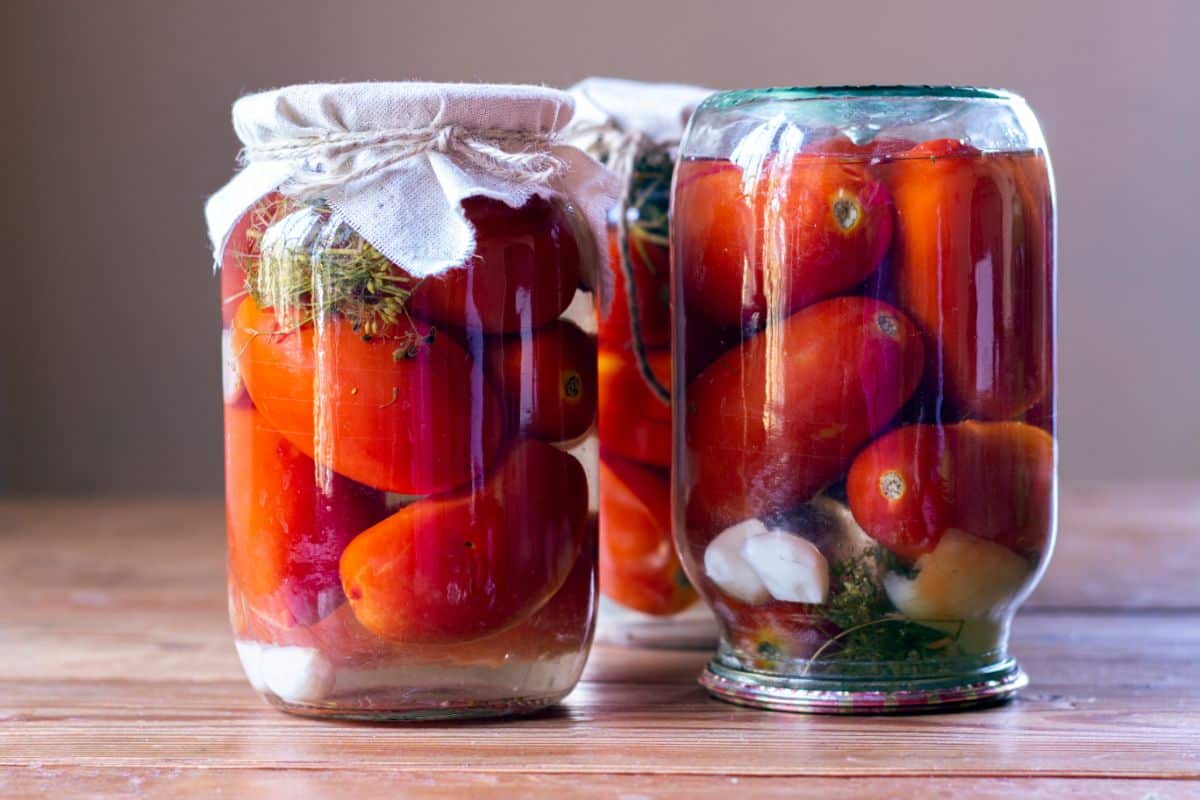
| Plant name: | Tomatoes |
| Light requirements: | Full sun |
| Water requirements: | Moderate |
| Harvest time: | Summer to fall |
| Water bath canning (with added acid) or pressure canning? | Both |
Another versatile canning vegetable, tomatoes, can be preserved in so many different ways. You can whole, diced, or sliced tomatoes, or you can turn them into pasta, pizza, or other sauces before canning. Paste-type tomatoes are the most common tomatoes used for canning, but slicing and cherry tomatoes can also be canned for winter preservation.
Before canning tomatoes, most recipes suggest that you remove the skins from your tomatoes. The easiest way to do this is to slice a shallow ‘X’ on the bottom of your tomatoes and then boil them for 30 seconds to one minute. Then, scoop the tomatoes into an ice bath, and the tomato skins should slide right off!
3. Onions

| Plant name: | Onions |
| Light requirements: | Full sun |
| Water requirements: | Moderate |
| Harvest time: | Spring to fall |
| Water bath canning (with added acid) or pressure canning? | Both |
Pickled onions are delicious on their own, and they make tasty garnishes for burgers, salads, and other dishes. Even better, if you choose red onions for pickling, your pickled onions will have spectacular color! But if you don’t want to pickle onions on their own, these veggies are incredibly useful ingredients to have on hand during the canning season because they are used in so many different canning recipes.
Sliced onions are often worked into pickle recipes, and they’re also often included in canned tomato sauces. That’s why, if you want to try your hand at canning, you’ll always need to leave plenty of room in your garden for at least a row or two of onions. For even more options, you can also preserve pint-sized onion varieties like ‘Cippolini,’ which make the perfect cocktail garnishes!
4. Carrots
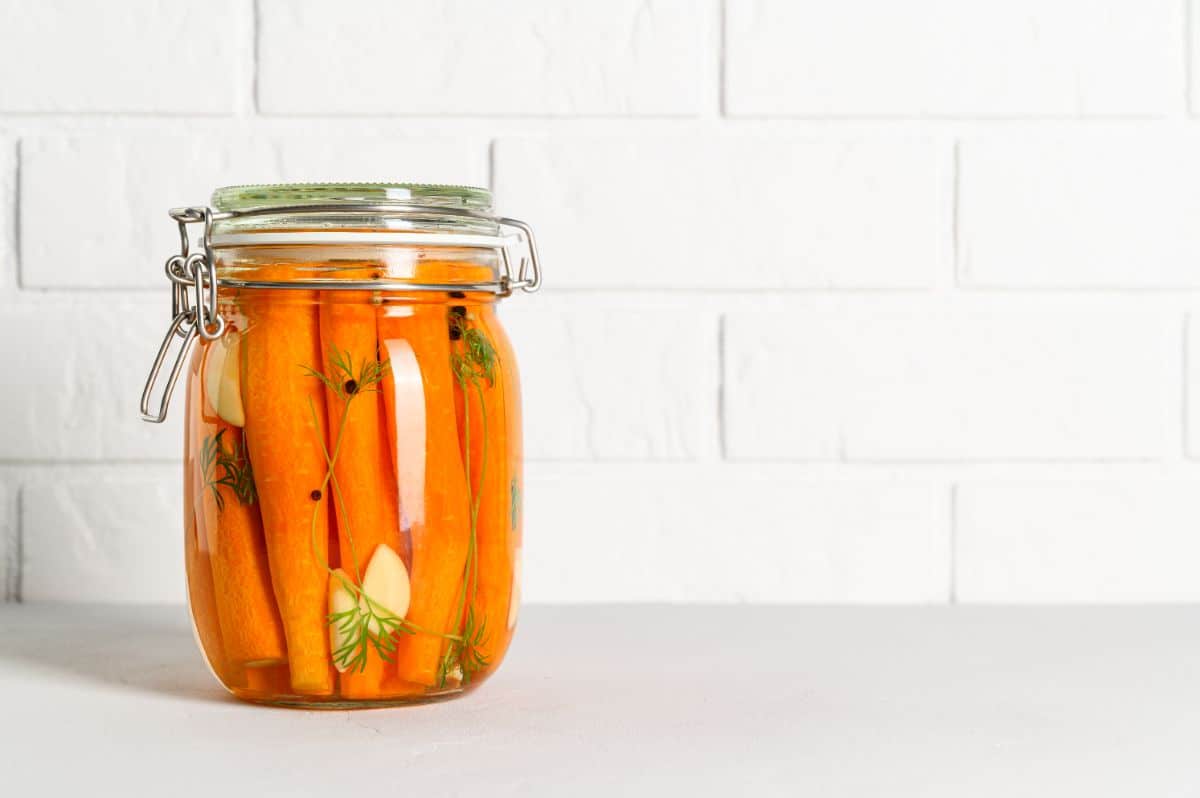
| Plant name: | Carrots |
| Light requirements: | Full sun |
| Water requirements: | Moderate |
| Harvest time: | Spring to fall |
| Water bath canning (with added acid) or pressure canning? | Both |
Autumn harvests of carrots are often stored in root cellars, but if you have a bumper crop of carrots and don’t want them to go to waste, you can also can them! Dilly carrots are a crunchy and flavorful snack that can be used as a garnish -- just like cucumber pickles! Carrots are also often included in mixed vegetable canning recipes, like giardiniera.
Any type of carrot can be used for canning, but storage carrot varieties are the obvious choice as they are often grown towards the end of the season, and their large root size makes them easy to work with. But if you love using colorful ingredients, you can also try canning purple, white, or yellow carrot cultivars. The easiest way to can carrots is with vinegar, but you can also can carrots without vinegar if you have a pressure canner.
5. Green beans
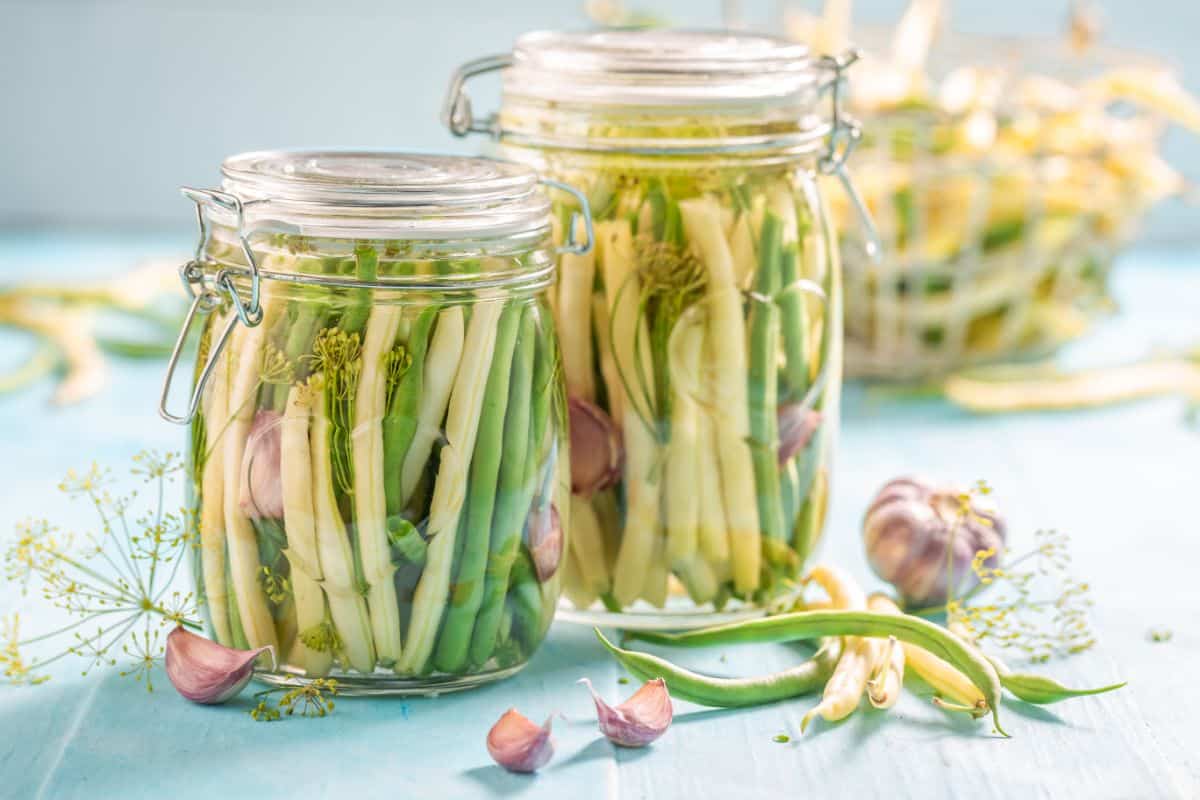
| Plant name: | Green beans |
| Light requirements: | Full sun |
| Water requirements: | Moderate |
| Harvest time: | Summer to fall |
| Water bath canning (with added acid) or pressure canning? | Both |
Like carrots, green beans are often canned with a bit of dill to make the ever-popular dilly green bean. But you can also can green beans in mixed vegetable recipes or preserve them without vinegar using the pressure canning method. For even more colorful jars, try growing both green and yellow bean varieties and layer the different bean colors in your jars before pouring in your brine.
Pickled green beans make for excellent snacking, and they can also be used, like cucumber pickles, to garnish hamburgers and other dishes. Pressure canned green beans, on the other hand, make meal prep a breeze, and your canned beans can be easily stirred into soups, casseroles, and other hearty fares. If you want to get a larger harvest, pick your beans often to encourage your vines to produce more pods.
6. Dill
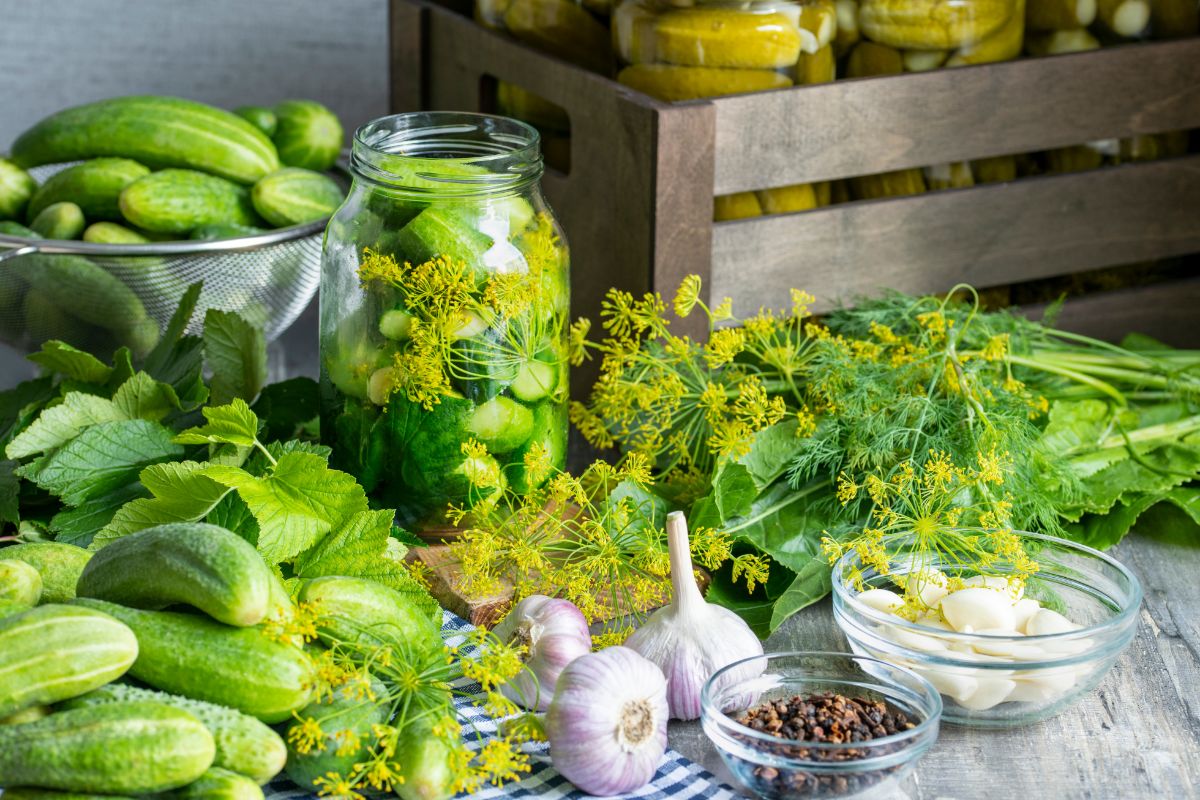
| Plant name: | Dill |
| Light requirements: | Full sun to part shade |
| Water requirements: | Moderate |
| Harvest time: | Spring, Fall |
| Water bath canning (with added acid) or pressure canning? | Both |
Canning season wouldn’t be complete without lots of dills! A super useful ingredient in many different canning recipes, fresh dill can be worked into dilly beans and dilly carrots, as well as dill pickles. How much dill you’ll need for canning will depend on how many jars you intend to process, but we recommend planting lots and lots of dill since you can never have enough of this flavorful herb.
While dill is a relatively easy herb to keep, it does bolt in the summer heat, which changes the plant’s flavor. To avoid this, be sure to succession plant dill throughout the growing season and plant more dill seeds towards the end of summer so you’ll have a lush crop of dill just in time for canning. You can also try out heat-resistant dill cultivars like ‘Dukat,’ which are less likely to bolt when temperatures rise.
7. Garlic
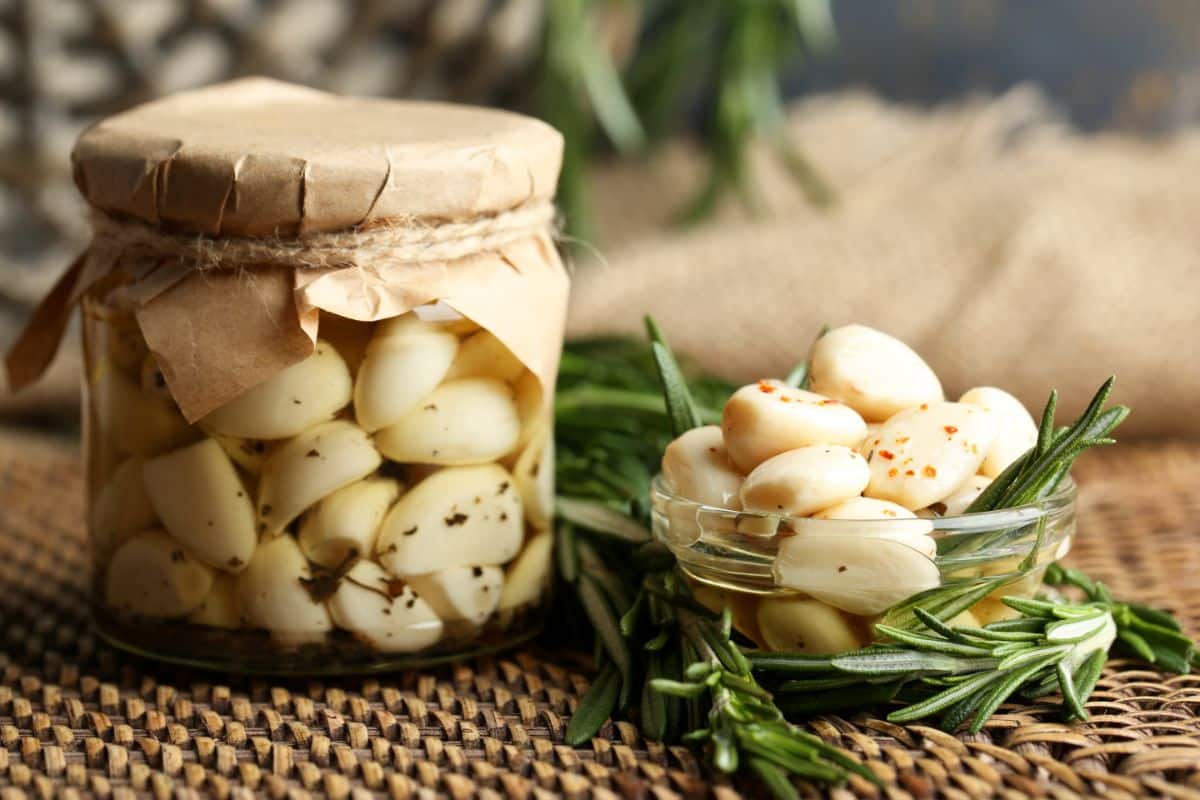
| Plant name: | Garlic |
| Light requirements: | Full sun |
| Water requirements: | Moderate to low |
| Harvest time: | Summer |
| Water bath canning (with added acid) or pressure canning? | Both |
Like dill, garlic is a ubiquitous ingredient in canning recipes. Fresh garlic is used in canned tomato sauces, as well as pretty much any pickling recipe you can imagine. Spicy and savory garlic cloves take canned vegetables to the next level, but garlic can also be canned on its own and served as a garnish or as a snack with olives.
Both hardneck and softneck garlic varieties are appropriate for canning, but one thing you’ll want to remember is that garlic is a slow-growing crop. If you want to have garlic for canning season, you’ll need to get your cloves in the ground early. Garlic cloves are usually planted in October and then harvested the following summer.
8. Peppers
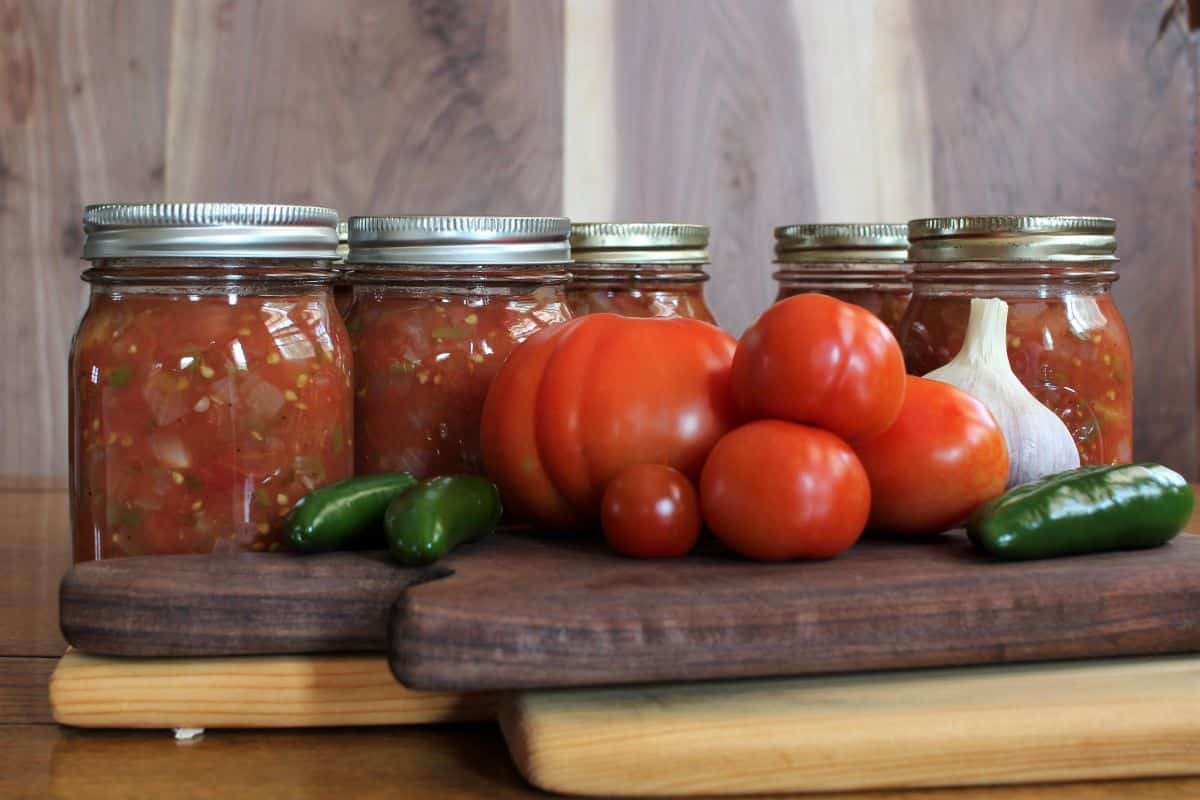
| Plant name: | Peppers |
| Light requirements: | Full sun |
| Water requirements: | Moderate |
| Harvest time: | Summer to fall |
| Water bath canning (with added acid) or pressure canning? | Both |
Both hot and mild peppers are useful for canning, and they can be blended in homemade salsa, hot sauces, and other preserves too. If you like heat, you can play around with fiery peppers like the ‘Carolina Reaper,’ or you can try milder chilis like serranos, habaneros, and jalapenos. Whatever peppers you grow, you’re sure to find tons of canning recipes to use up your pepper crop.
Peppers get hotter as they age or when they’re grown in hot weather, so if you want more heat, allow your peppers to mature fully until their skins develop into a rich orange or red hue. While peppers are commonly grown in vegetable gardens, their compact size also makes them appropriate for container beds, although you may need to prune your plants a bit to help them fit in smaller spaces. Peppers can be canned straight out of the garden, or you can lacto-ferment them to make a hot sauce that’s rich in gut-healthy probiotics!
9. Apples
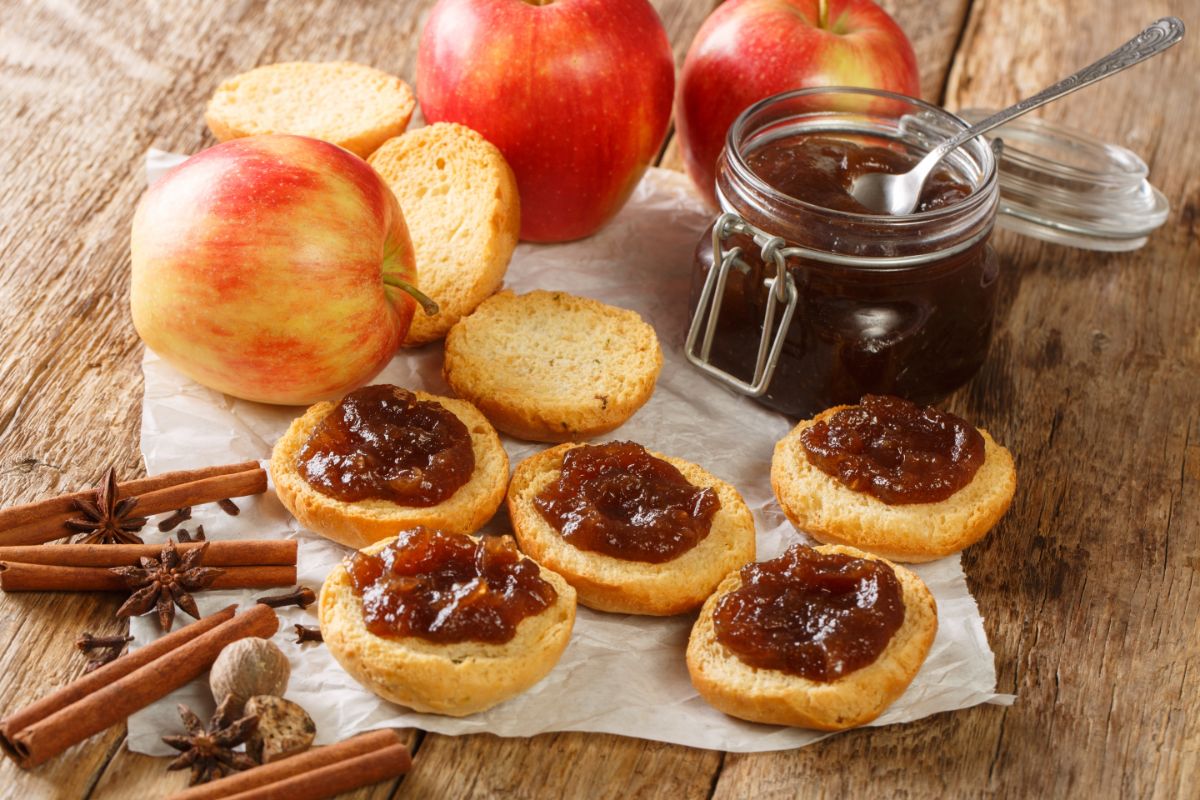
| Plant name: | Apples |
| Light requirements: | Full sun |
| Water requirements: | Moderate |
| Harvest time: | Summer to fall |
| Water bath canning (with added acid) or pressure canning? | Both |
If you have the space for a few small trees, you can also grow your own apples in your backyard for canning and preserving. While it would be nice if we could all fit a fruit orchard in our gardens, dwarf apple tree varieties grow compactly enough that you can usually fit one or two trees in a small gardener or urban space. For even more space savings, you can also try espaliered apple trees, which can be trained to grow directly up garden walls.
As far as canning goes, making homemade applesauce is the most obvious way to preserve a bumper crop of apples, but you can also can apples in chunks or quarters to use in pies. By increasing the cooking time and mixing in a few additional spices, you can also transform applesauce into flavorful apple butter to serve on toast or pastries. The best apples for canning are ones that maintain their crisp, firm texture after processing, such as ‘Braeburn,’ ‘Mcintosh,’ and ‘Crispin.’
10. Berries
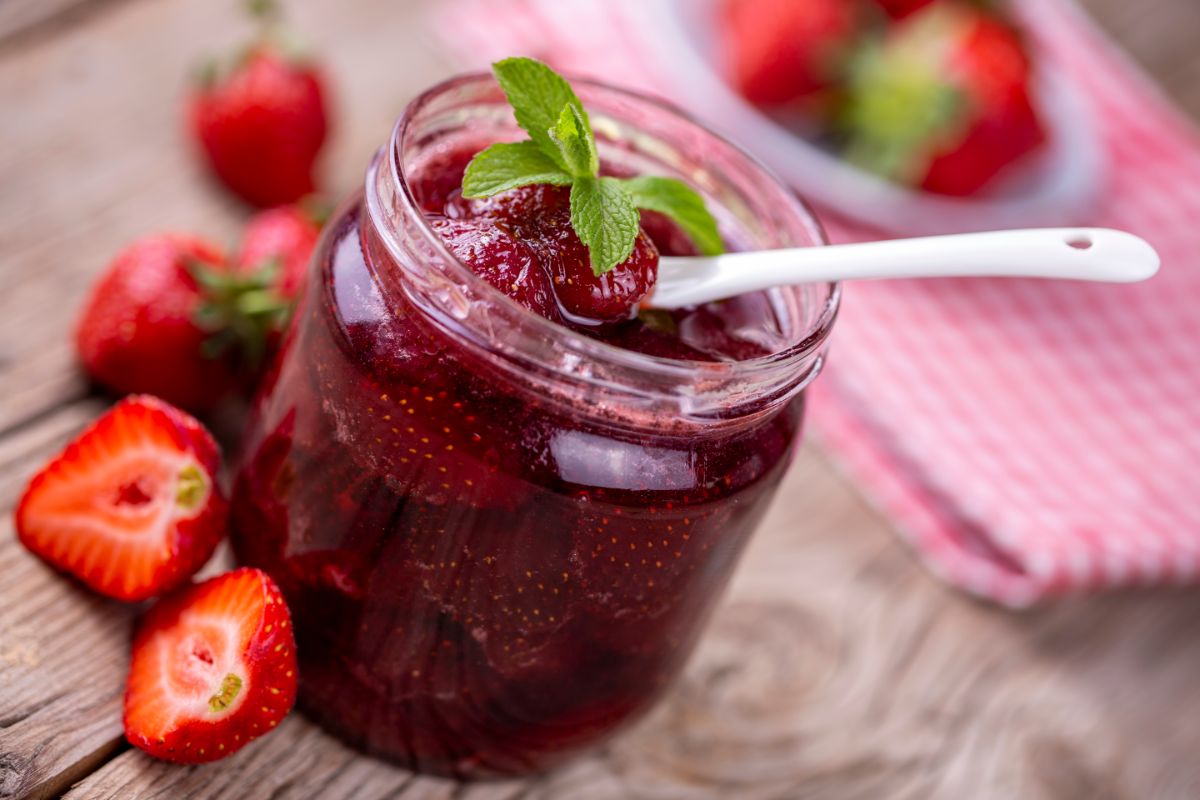
| Plant name: | Berries |
| Light requirements: | Full sun |
| Water requirements: | Moderate |
| Harvest time: | Summer to fall |
| Water bath canning (with added acid) or pressure canning? | Both |
Another sweet canning treat, most berries also preserve beautifully, and they can be turned into homemade jams and jellies. Strawberries are commonly used in canning, but raspberries, blackberries, and blueberries can also be preserved in this manner. You can also try canning less common berry varieties, such as currants, gooseberries, or ground cherries.
If you’re new to working with sweet preserves, jellies tend to be easiest for beginners to master, while jams require a few extra ingredients and a longer cooking time. Jellies are essentially made by brewing a tea with your favorite ingredients, like berries, and then straining out the solids. Mix in a bit of pectin, sugar, and a few other ingredients, then add heat, and you’re well on your way to making a delicious berry jelly!
11. Mint
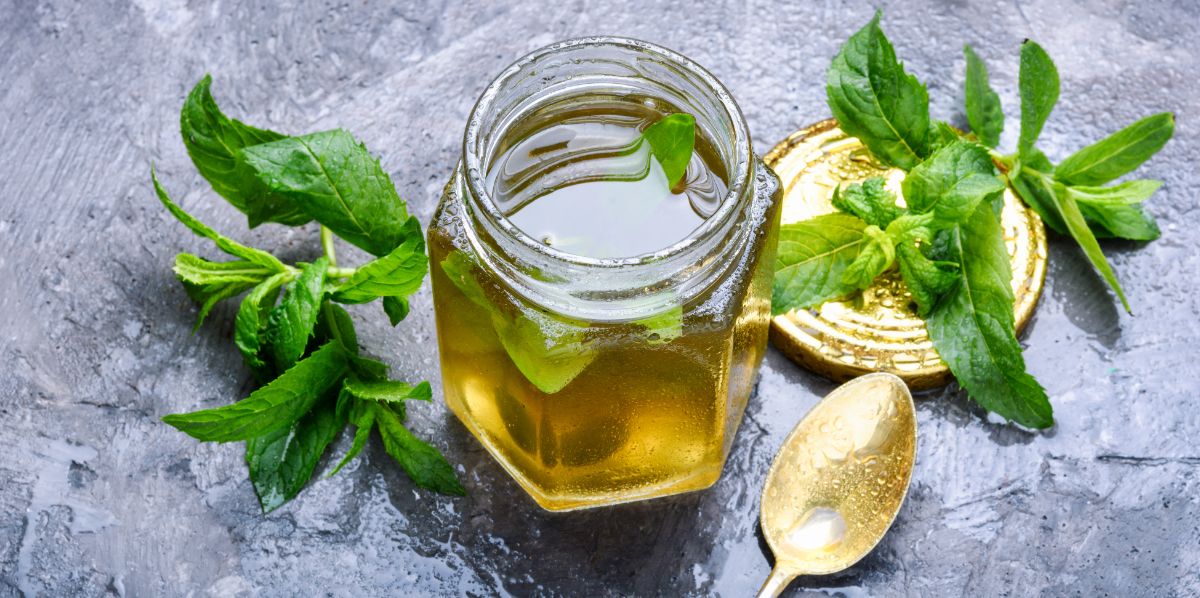
| Plant name: | Mint |
| Light requirements: | Full sun to part shade |
| Water requirements: | Moderate |
| Harvest time: | Spring to fall |
| Water bath canning (with added acid) or pressure canning? | Water bath canning |
Mint and herbs like cilantro can be used to flavor an assortment of different canned goods, including canned sauces and salsas. But beyond using mint as a flavoring agent, you may not think about canning mint. However, if you like using mint jelly on meats and toast, making a homemade batch of mint jelly may be in order.
Mint jelly is super easy to make and requires just a few simple ingredients, like pectin and sugar. You can opt to add a bit of food coloring to your recipe to make your mint jelly a vibrant green, or you can enjoy the jelly as-is. Homemade mint jelly is definitely a treat, but it also makes an excellent hostess gift or a present for loved ones around the holidays!
12. Corn
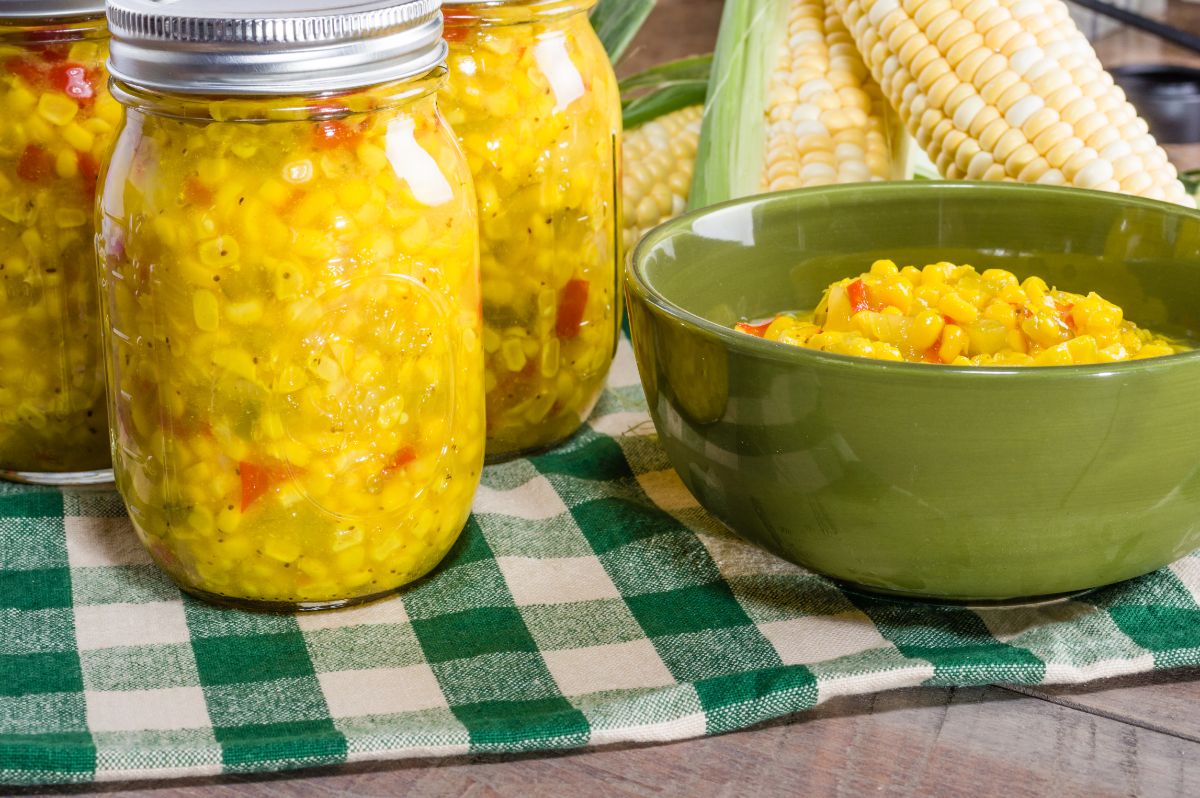
| Plant name: | Corn |
| Light requirements: | Full sun |
| Water requirements: | Moderate |
| Harvest time: | Summer to fall |
| Water bath canning (with added acid) or pressure canning? | Both |
For winter preserving, corn is often dried or frozen in airtight bags, but you can also can corn in various ways. If you’re only familiar with water bath canning, you can preserve your corn with vinegar in recipes like corn salsa. For more advanced canners, you can also preserve corn kernels or creamed corn with pressure canning.
There’s a lot of variety in corn plants today, and you can find corn with deep, golden-yellow kernels, or you can opt for cobs with bright, nearly white flesh. Sweet corn also comes with different levels of sweetness to suit any palate. If you love extra sweet corn, try out Supersweet (sh2) corn varieties, or if you prefer a milder cob, stick to normal sugary (su) corn types.
13. Beets
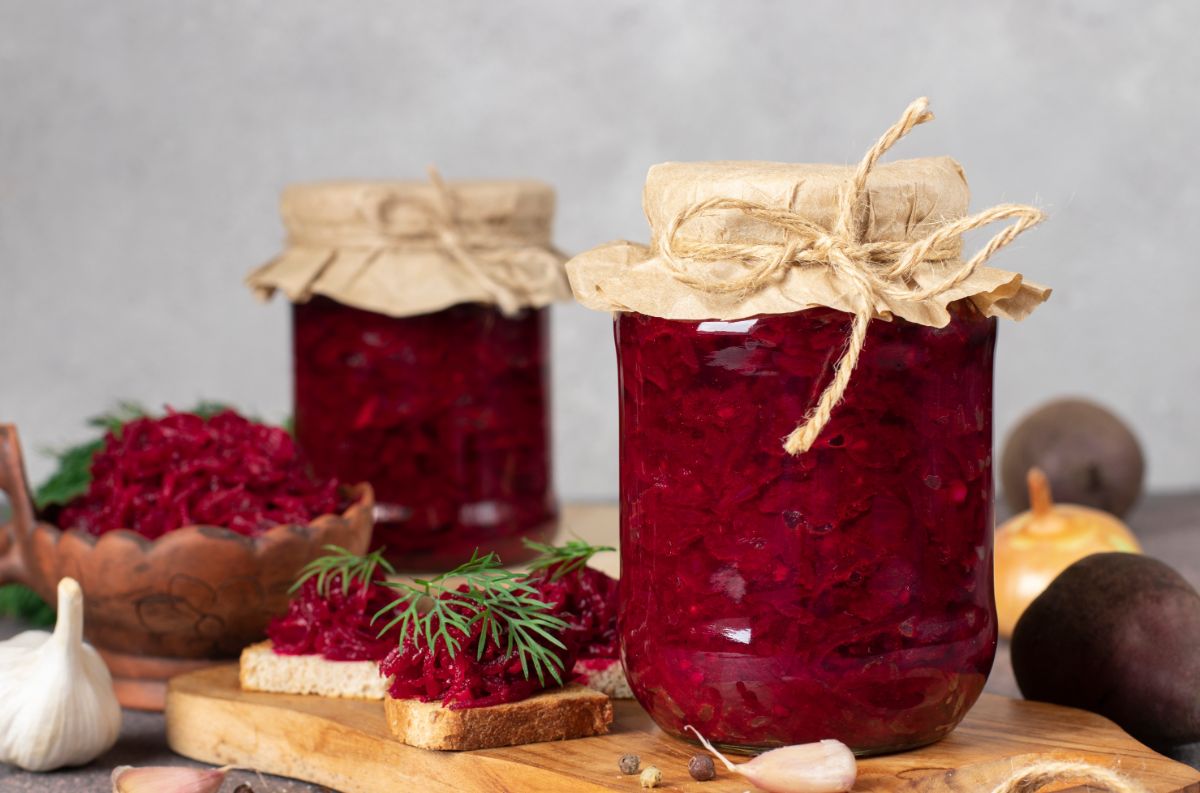
| Plant name: | Beets |
| Light requirements: | Full sun |
| Water requirements: | Moderate |
| Harvest time: | Spring |
| Water bath canning (with added acid) or pressure canning? | Both |
A classic addition to any winter pantry, beets are canned, sliced, whole, diced, or shredded. No matter how you pack them, homemade canned beets are always delicious, with that perfect balance of sweet and tangy flavors and a savory taste that will leave you feeling satisfied too! Red beets are the most common beet varieties for canning, but you can also find golden or yellow beets that look bewitchingly beautiful in glass jars.
If you like fermenting foods, you can make homemade sauerkraut with beets and then can the batch for longer-term storage. Beets are particularly good for canning because they grow quickly and they’re very cold hardy. At the end of the growing season, beets are still growing strong, providing you with the freshest ingredients just in time for preservation season.
14. Chives
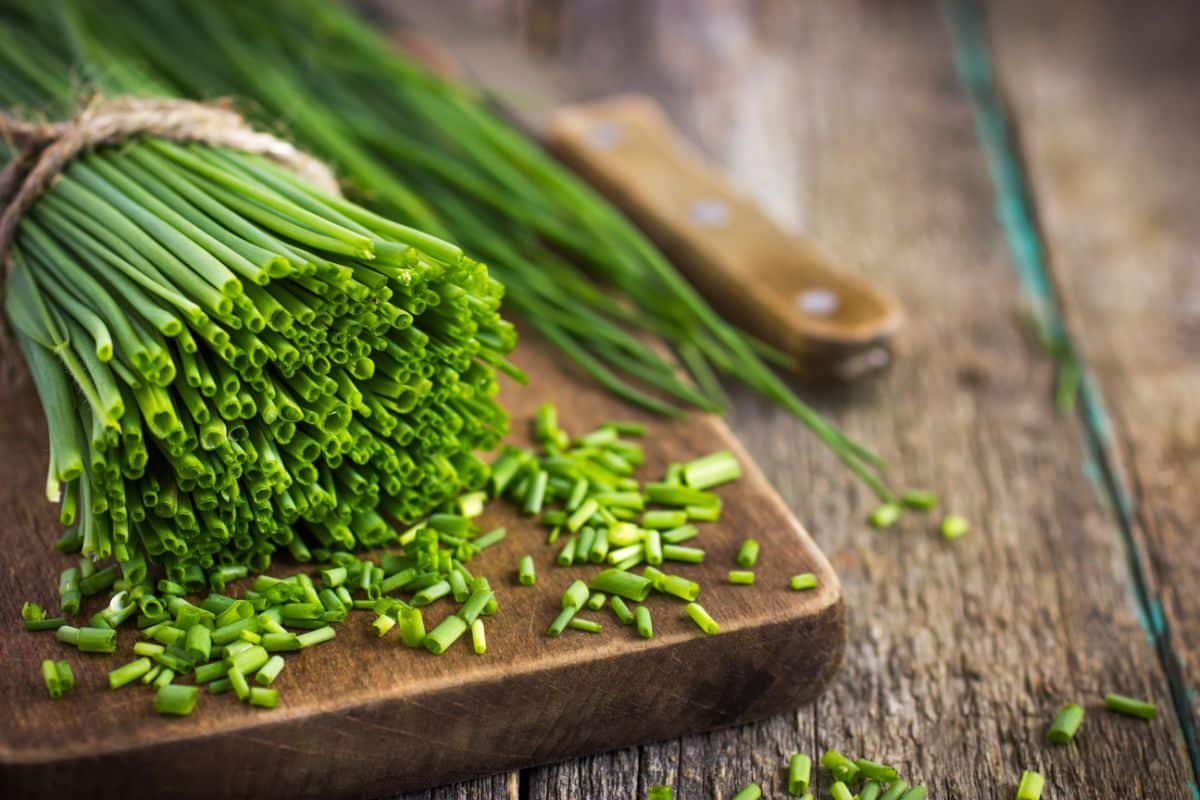
| Plant name: | Chives |
| Light requirements: | Full sun |
| Water requirements: | Moderate |
| Harvest time: | Spring to fall |
| Water bath canning (with added acid) or pressure canning? | Water bath canning |
Like mint and other herbs, chives can be used to flavor other canned goods, or you can preserve chives on their own in a zingy homemade chive jelly. As with mint jelly, chive jelly is a nice complement to pastries and roasted dishes. But if you want to take the flavor of chive jelly even further, slather it on toast with a bit of cream cheese and savor it along with a steaming cup of hot tea!
One of the best things about chives is that they’re ultra-easy to grow. Even if you’re new to gardening and canning, you should have success growing chives, and these compact plants can also be kept in container gardens. Plus, if you allow chives to flower, they are the ultimate pollinator plant, and they’ll lure butterflies, bees, and other beneficial insects to your garden too!
15. Radishes
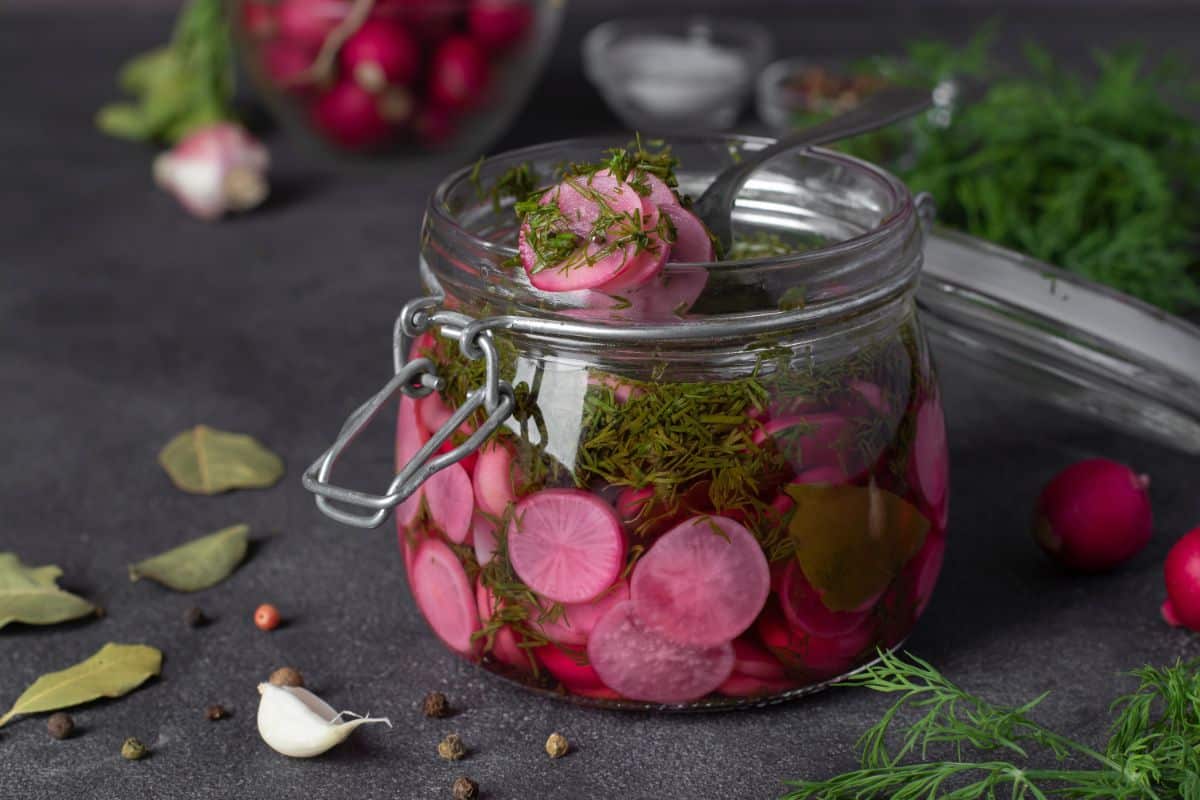
| Plant name: | Radishes |
| Light requirements: | Full sun |
| Water requirements: | Moderate |
| Harvest time: | Spring to fall |
| Water bath canning (with added acid) or pressure canning? | Both |
Sliced, diced, or shredded radishes are another delicious, canned treat. You can serve pickled radishes on your favorite wraps or sandwiches, use them as a garnish or eat them as a snack. One of the most traditional ways to preserve radishes is to pickle and can them with carrots, which is a Vietnamese dish known as Do Chua.
As with beets and carrots, radishes grow best in cool weather, so they’re a good crop to keep in autumn. Radishes also grow incredibly fast, allowing you to get a crop or two of autumn radishes in before the growing season is over. While red and white radishes are the most common radishes to grow, there are tons of other colorful radish varieties available, including the showstopping ‘Watermelon’ radish and ‘Round Black Spanish’ radish, which has a dramatically colored black skin.
16. Peaches
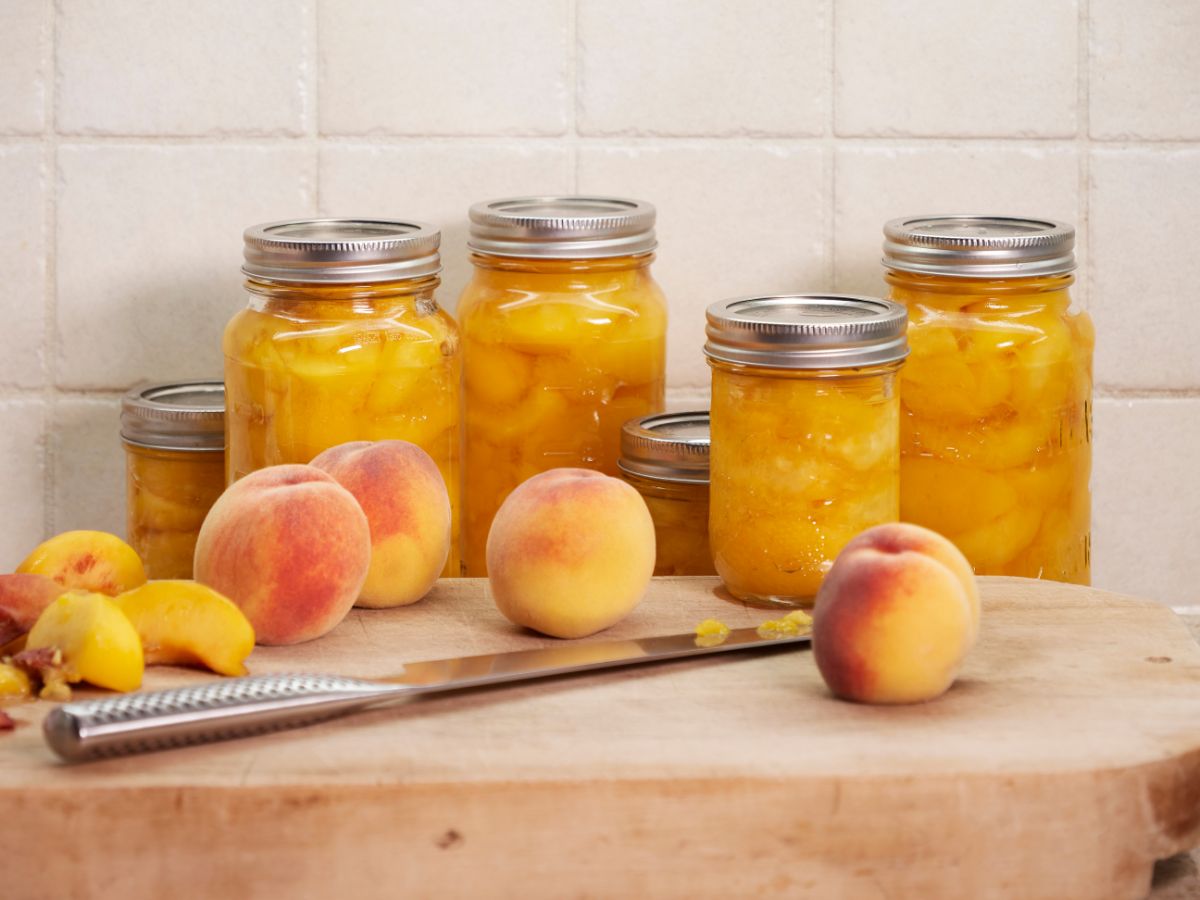
| Plant name: | Peaches |
| Light requirements: | Full sun |
| Water requirements: | Moderate |
| Harvest time: | Summer to fall |
| Water bath canning (with added acid) or pressure canning? | Both |
Peaches are another delicious fruit that’s often canned for piemaking and other desserts. If you have a larger garden space, you may want to plant your own peach tree and harvest the freshest homegrown peaches for your canning recipes. Happily, most peach trees are self-pollinating, so you only need to grow one of them to get a large harvest of fruit.
Standard-sized peach trees grow to about 15’ tall with branches that spread about 20’ in diameter. However, you can also find dwarf varieties that max out at around 8 to 10’ in height. Although you can use different peach varieties for your preserves, some of the most popular canning peaches include ‘Redhaven,’ ‘Loring,’ and ‘Belle of Georgia.’
17. Peas
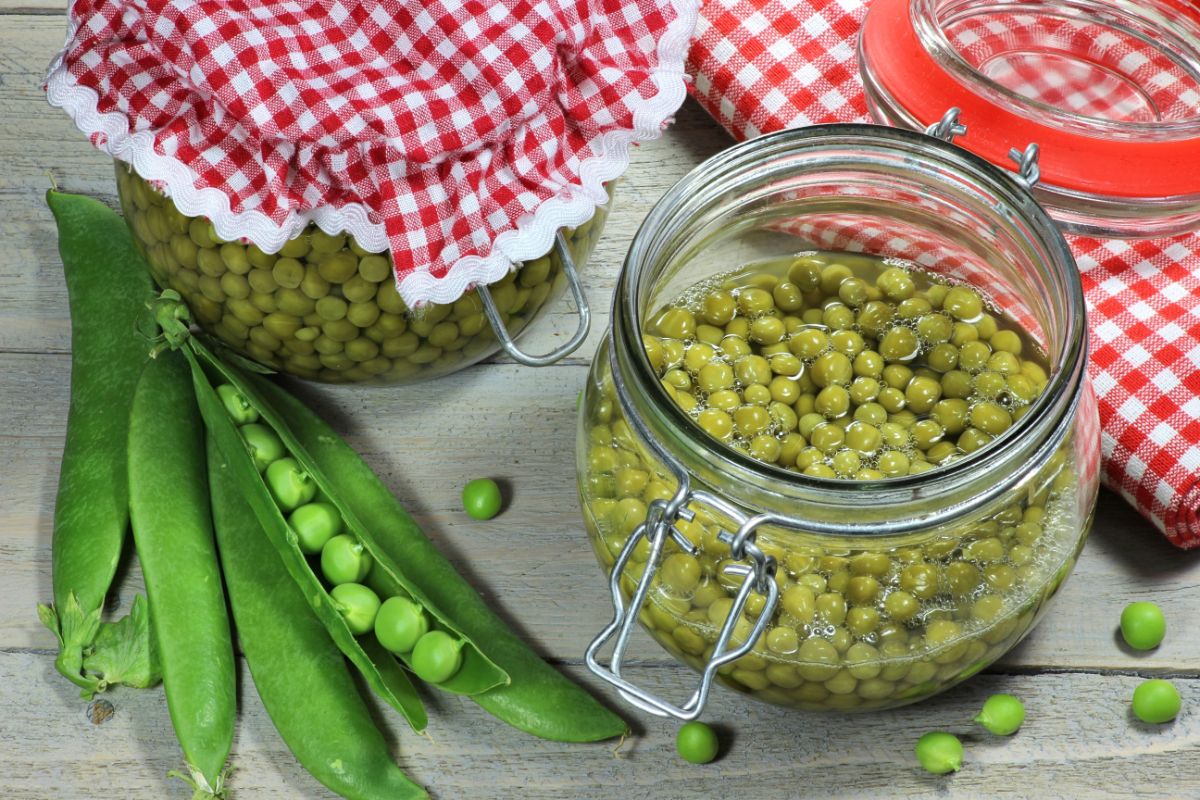
| Plant name: | Peas |
| Light requirements: | Full sun |
| Water requirements: | Moderate |
| Harvest time: | Spring, Fall |
| Water bath canning (with added acid) or pressure canning? | Pressure canning |
Peas are always handy to have in the kitchen, and canned peas can be easily worked into tons of recipes, including soups, stir-fries, and casseroles. But store-bought canned peas often have very high sodium levels, and their flavors may not be optimal. However, if you’re into canning, you can make the most delicious homemade canned peas and store your spoils in your pantry throughout the winter months.
Many of the veggies on this list are high-acid foods, or they are canned with added vinegar, allowing them to be preserved with water bath canning methods. But because peas are a low-acid veggie, they should only be canned with a pressure canner. Pressure canning is a bit more advanced than water bath canning, but it’s easy enough to master, especially if you invest in a quality canning book before starting.
18. Squash and pumpkins

| Plant name: | Squash and pumpkins |
| Light requirements: | Full sun |
| Water requirements: | Moderate |
| Harvest time: | Summer to fall |
| Water bath canning (with added acid) or pressure canning? | Both |
Squash and pumpkins aren’t as commonly canned as some other vegetables, but canning these items makes a lot of sense. At the end of the growing season, gardeners are often overrun with more zucchini, squash, and pumpkins than they know what to do with. Freezing is one option, but these veggies are also deliciously canned, and preserving them in this manner will give you even more options on how to serve them.
Squash and zucchinis are able to be canned with water bath canning as long as you add an acid, like vinegar, to your recipe. Pumpkins, however, are preserved with pressure canning; however, if you don’t mind the effort, this is a great way to have fresh pumpkin puree on hand for pie making. For even more flavor options, squash and zucchinis can be made into delicious chutneys, or they can be pickled just like cucumbers!
Summary
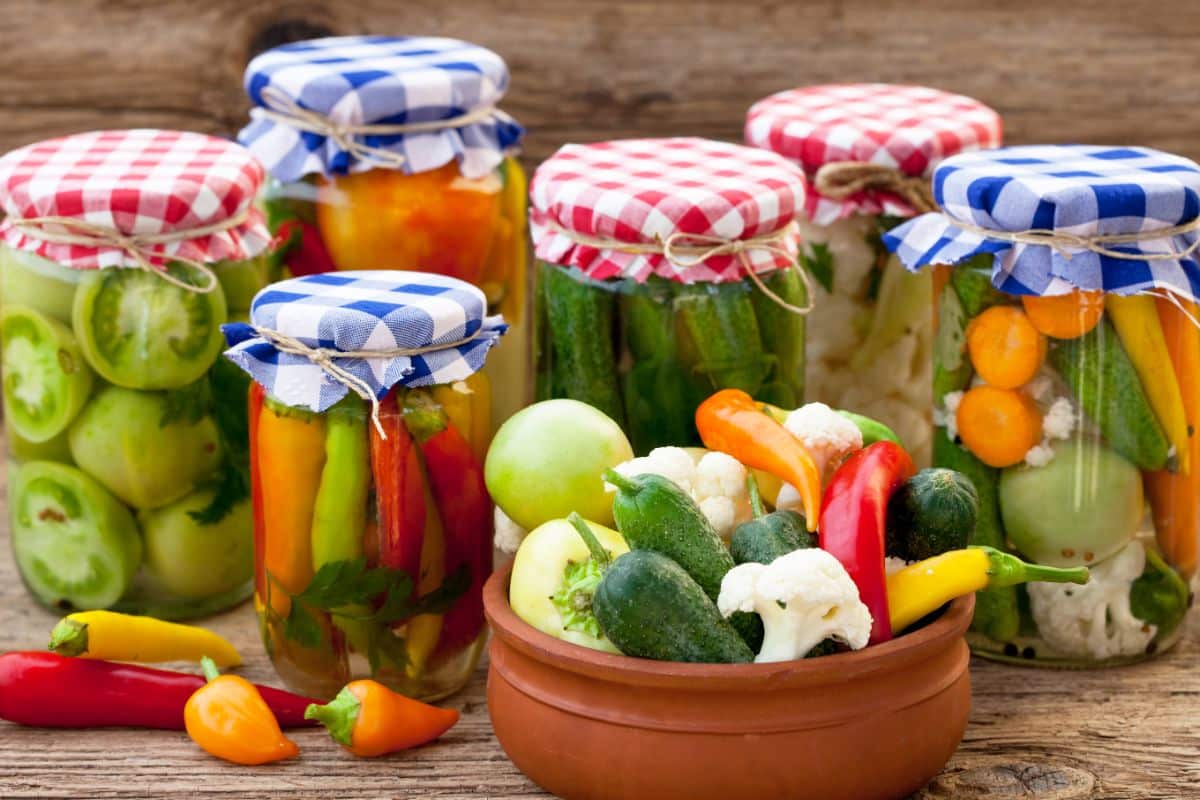
After you’ve harvested your crops for canning, preserving your harvest takes a bit of work, but it’s easy enough to master. All you need are the right tools – like canning jars, a canning funnel, and canning tongs – and a canning pot that’s big enough to work with. Then start chopping, peeling, and dicing your harvest for the most delicious homemade salsas, relishes, pickles, and more!
If this guide inspired you to try your hand at preserving your own harvest, you may also like our guide on the best herbs to dry for homemade herbal teas.

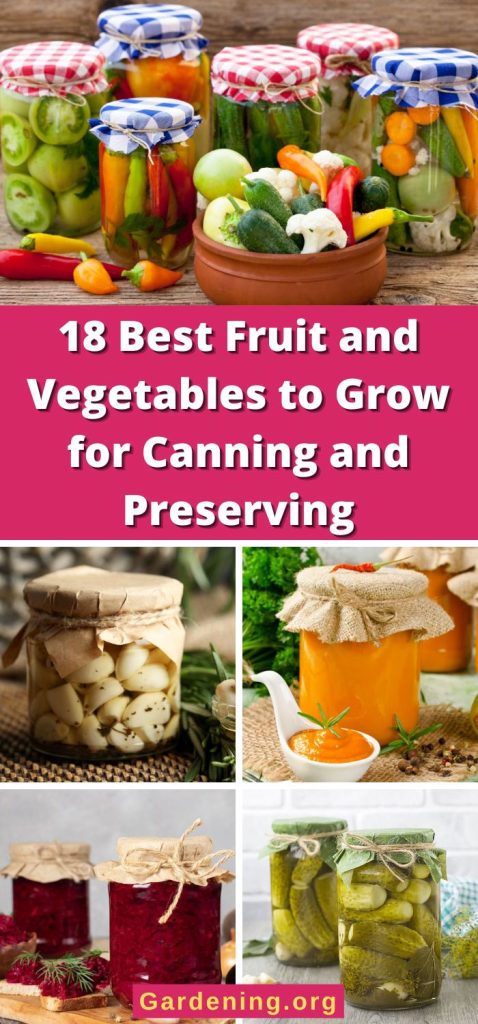
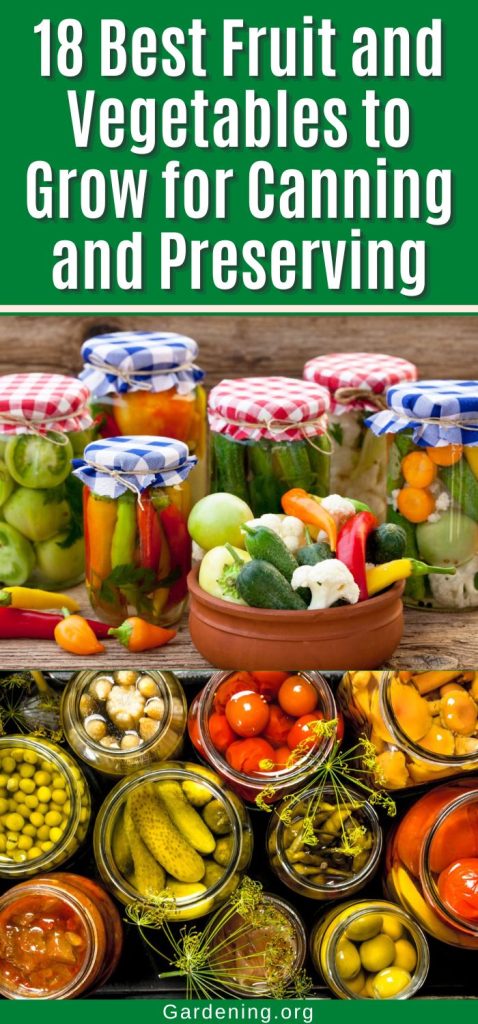
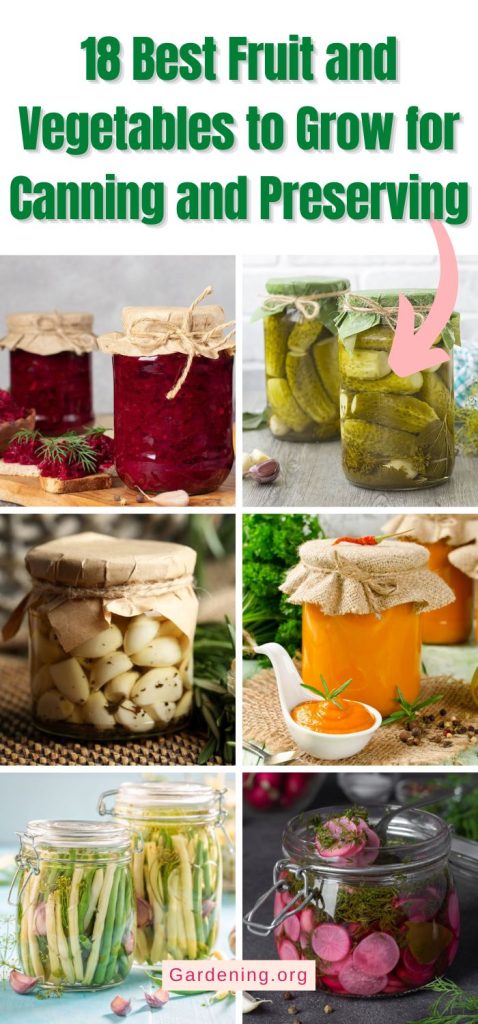
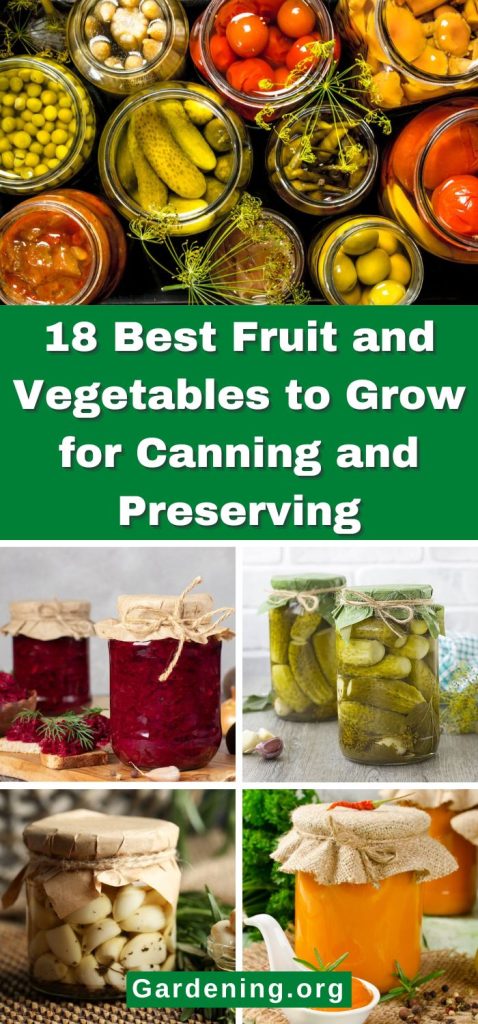


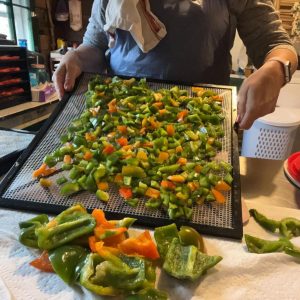
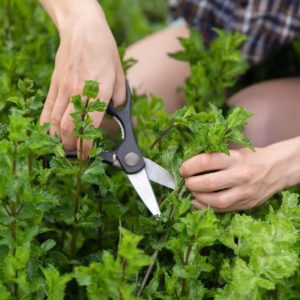
Leave a Reply